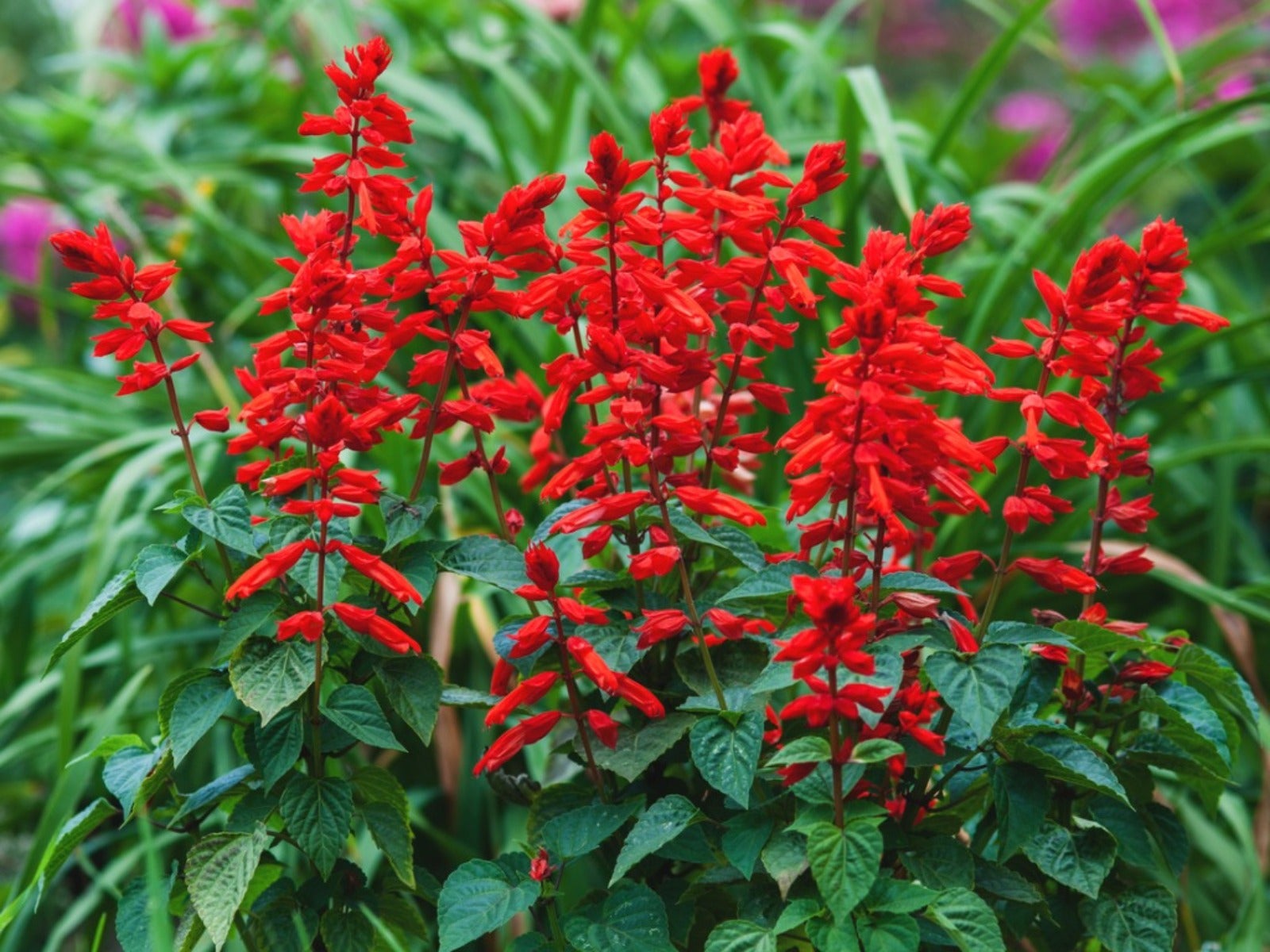Varieties Of Salvia For Part Shade Or Shade


Many gardeners relish salvia for its prolific summer-long bloom period and ability to withstand hot, dry conditions. Sometimes called sage, these ornamental plants are popular for borders and mass plantings. Salvia flowers are well-adapted for containers and make excellent cut flowers. Most species prefer full sun locations, but can salvias grow in shade?
Salvia Sunlight Requirements
It's estimated there are between 700 and 3000 species in the salvia genus, which is a member of the mint family. Most salvia species, including culinary sage (Salvia officinalis), prefer 6 to 8 hours of direct sunlight per day.
Some species of salvia are tolerant of partial shade exposure (3 to 6 hours of sunlight per day), but may not bloom as profusely in less sunny areas of the garden. A few ornamental species of salvia actually prefer partial sun and can tolerate shady spots which receive less than 4 hours of sunlight per day.
Salvia: Part-Shade Species
When selecting salvias for partial shade flower gardens, consider these species which can tolerate less than full sun growing conditions:
- Bedding sage (Salvia splendens) -- Readily available in many gardening centers, this popular salvia species produces spikes of flowers which grow 8 to 30 inches (20-76 cm.) tall. Sometimes called Scarlet sage for its beautiful red flowers, newer varieties of bedding sage offer a selection of bloom colors including purple, orange, salmon and white.
- Black and Blue sage (Salvia guarnitica) -- So named for its cobalt blue flowers and black calyx, Black and Blue salvia grows up to 5 feet tall (1.5 m.) and is winter hardy in USDA zones 7 to 10.
- Cleveland sage (Salvia clevelandii) -- One of the most fragrant species of salvia, Cleveland sage is a woody shrub-like species with grayish green foliage. It produces lavender flowers in late spring.
- Creeping sage (Salvia sonomensis) -- Often grown as ground cover, Creeping sage has silvery green foliage. It produces bluish-violet spikes of flowers in spring and early summer.
- Forsythia sage (Salvia madrensis) -- In frost-free climates, the spiky yellow blossoms of Forsythia sage provide beautiful colors to the fall and winter garden. This perennial can reach 7 feet (2 m.) tall.
- Scarlet, Blood or Texas sage (Salvia coccinea) -- Although this sage shares common monikers with other salvia species, it was named for its bright red, 10 inch (25 cm.) spikes of flowers. This fast-growing subshrub can reach 2 to 4 feet (.6-1.2 m.) tall. Cultivars with white, pink, salmon or orange flowers have been developed.
- Sticky Sage (Salvia glutionsa) -- So named for the glutinous hairs which cover the plant, Sticky Sage produces attractive 12 inch (30 cm.) spikes of yellow flowers dotted with maroon flecks.
Shade Sage and Salvia Species
If you're looking for colorful, blooming plants to grow under trees or in low light parts of the garden, select these species of salvia for shade areas. All three prefer partial shade, but will continue to bloom with less sunlight.
- Hummingbird sage (Salvia spathacea) -- Named for its tubular flowers which attract hummingbirds, this species blooms in the spring and has fruity scented blossoms. Hummingbird sage reaches a height of 12 to 36 inches (30-91 cm.) and is available in a variety of colorful blooming cultivars. This species remains evergreen in climates with mild winters. Winter hardy in USDA zones 8-11.
- Japanese Yellow sage (Salvia koyamae) -- With foliage rarely reaching more than 12 inches (30 cm.) tall, Japanese yellow sage's creeping growth habit makes it a suitable ground cover for shady areas. The lemony yellow spikes of flowers can reach 18 to 24 inches (46-61 cm.) tall and appear in late summer and early fall. USDA hardiness zones 5 to 9.
- Himalayan Cloud Sage (Salvia nubicola) -- Native to mountainous slopes in parts of the Middle East and Eurasia, Himalayan Cloud sage is a herbaceous perennial which adapts well to shady areas of the garden. The 10 inch (25 cm.) spikes of flowers are pale yellow with hints of maroon. Deadhead this species for a second wave of flowers later in the season. Winter hardy in USDA zones 7-11.
Sign up for the Gardening Know How newsletter today and receive a free copy of our e-book "How to Grow Delicious Tomatoes".

Laura Miller has been gardening all her life. Holding a degree in Biology, Nutrition, and Agriculture, Laura's area of expertise is vegetables, herbs, and all things edible. She lives in Ohio.